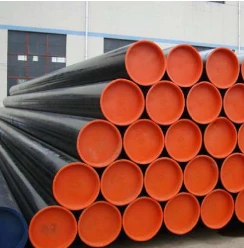-
Cangzhou Yulong Steel Co., Ltd.
-
Phone:
+86 13303177267 -
Email:
admin@ylsteelfittings.com
- English
- Arabic
- Italian
- Spanish
- Portuguese
- German
- kazakh
- Persian
- Greek
- French
- Russian
- Polish
- Thai
- Indonesian
- Vietnamese
- Zulu
- Korean
- Uzbek
- Hindi
- Serbian
- Malay
- Ukrainian
- Gujarati
- Haitian Creole
- hausa
- hawaiian
- Hebrew
- Miao
- Hungarian
- Icelandic
- igbo
- irish
- Japanese
- Javanese
- Kannada
- Khmer
- Rwandese
- Afrikaans
- Albanian
- Amharic
- Armenian
- Azerbaijani
- Basque
- Belarusian
- Bengali
- Bosnian
- Bulgarian
- Catalan
- Cebuano
- China
- China (Taiwan)
- Corsican
- Croatian
- Czech
- Danish
- Esperanto
- Estonian
- Finnish
- Frisian
- Galician
- Georgian
- Kurdish
- Kyrgyz
- Lao
- Latin
- Latvian
- Lithuanian
- Luxembourgish
- Macedonian
- Malgashi
- Malayalam
- Maltese
- Maori
- Marathi
- Mongolian
- Myanmar
- Nepali
- Norwegian
- Norwegian
- Occitan
- Pashto
- Dutch
- Punjabi
- Romanian
- Samoan
- Scottish Gaelic
- Sesotho
- Shona
- Sindhi
- Sinhala
- Slovak
- Slovenian
- Somali
- Sundanese
- Swahili
- Swedish
- Tagalog
- Tajik
- Tamil
- Tatar
- Telugu
- Turkish
- Turkmen
- Urdu
- Uighur
- Welsh
- Bantu
- Yiddish
- Yoruba

Nov . 20, 2024 15:23 Back to list
bending 316 stainless steel tubing
Bending 316 Stainless Steel Tubing A Comprehensive Guide
When it comes to applications that require durability, corrosion resistance, and high-temperature performance, 316 stainless steel tubing is often the material of choice. Bending this type of tubing is essential in various industries, including automotive, aerospace, marine, and even architectural design. In this article, we will explore the properties of 316 stainless steel, the bending process, the techniques involved, and the factors to consider for achieving an optimal bend.
Properties of 316 Stainless Steel
316 stainless steel is an austenitic alloy known for its excellent corrosion resistance, particularly against chlorides and various acidic environments. It consists primarily of iron, with significant amounts of chromium (16-18%) and nickel (10-14%), along with molybdenum (2-3%). The addition of molybdenum enhances its resistance to pitting and crevice corrosion, making 316 stainless steel an ideal choice for marine applications and environments exposed to aggressive chemicals.
Beyond its corrosion resistance, 316 stainless steel also exhibits good mechanical properties, including high tensile strength, toughness, and ductility. These properties allow the material to be shaped without compromising its integrity, making it suitable for bending and forming processes.
The Bending Process
Bending 316 stainless steel tubing requires precision and care to avoid damaging the material
. Several methods can be used to bend stainless steel tubing, including manual bending, rotary draw bending, and roll bending. Each technique has its own advantages and is suited to different types of bends and applications.1. Manual Bending This method is often used for smaller projects and involves using hand tools or simple mechanical devices. Manual bending can be effective for creating gentle curves but may lack the precision required for more complex shapes.
2. Rotary Draw Bending This is one of the most common methods for bending stainless steel tubing. It uses a bending machine that draws the tubing around a die, which shapes it into the desired angle. Rotary draw bending is well-suited for producing high-quality bends with minimal distortion. The key to success in this method is to control the pressure and speed of the process, as excessive force can lead to kinking or cracking.
bending 316 stainless steel tubing

3. Roll Bending In this technique, the tubing passes through a set of rollers that gradually shape it into a curve. Roll bending is particularly useful for creating large-radius bends and is commonly used in structural applications.
Factors to Consider
When bending 316 stainless steel tubing, several factors come into play, influencing the success and quality of the bend
- Material Thickness Thicker walls may require more force and could also affect the bend radius. It's essential to consider the wall thickness when choosing a bending method and die.
- Bend Radius The bend radius should generally be kept to a minimum to avoid damage to the tubing. A rule of thumb is to keep the bend radius at least equal to the diameter of the tubing for optimal results.
- Heat Treatment Some applications permit the use of heat during the bending process, which can increase ductility and reduce the risk of cracking. However, care must be taken to ensure that the heat does not affect the material’s properties negatively.
- Lubrication Using the right lubricant during the bending process can significantly reduce friction and help maintain the integrity of the tubing.
Conclusion
Bending 316 stainless steel tubing is a crucial process in many industrial applications that demand high performance and reliability. By understanding the properties of the material, the various bending techniques available, and the factors affecting the bending process, manufacturers and engineers can achieve optimal results. Whether it’s for intricate designs in architecture or robust frameworks in construction, mastering the art of bending 316 stainless steel tubing opens up endless possibilities in engineering and design.
Latest news
-
ANSI 150P SS304 SO FLANGE
NewsFeb.14,2025
-
ASTM A333GR6 STEEL PIPE
NewsJan.20,2025
-
ANSI B16.5 WELDING NECK FLANGE
NewsJan.15,2026
-
ANSI B16.5 SLIP-ON FLANGE
NewsApr.19,2024
-
SABS 1123 FLANGE
NewsJan.15,2025
-
DIN86044 PLATE FLANGE
NewsApr.19,2024
-
DIN2527 BLIND FLANGE
NewsApr.12,2024
-
JIS B2311 Butt-Welding Fittings LR/SR 45°/90° /180°Seamless/Weld
NewsApr.23,2024











